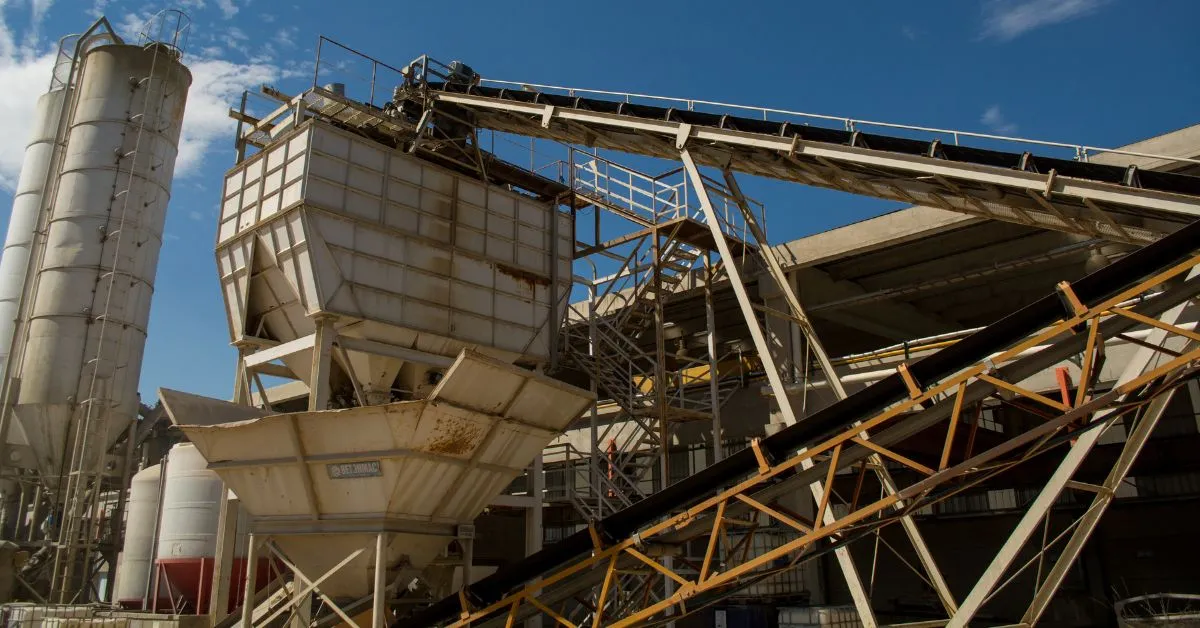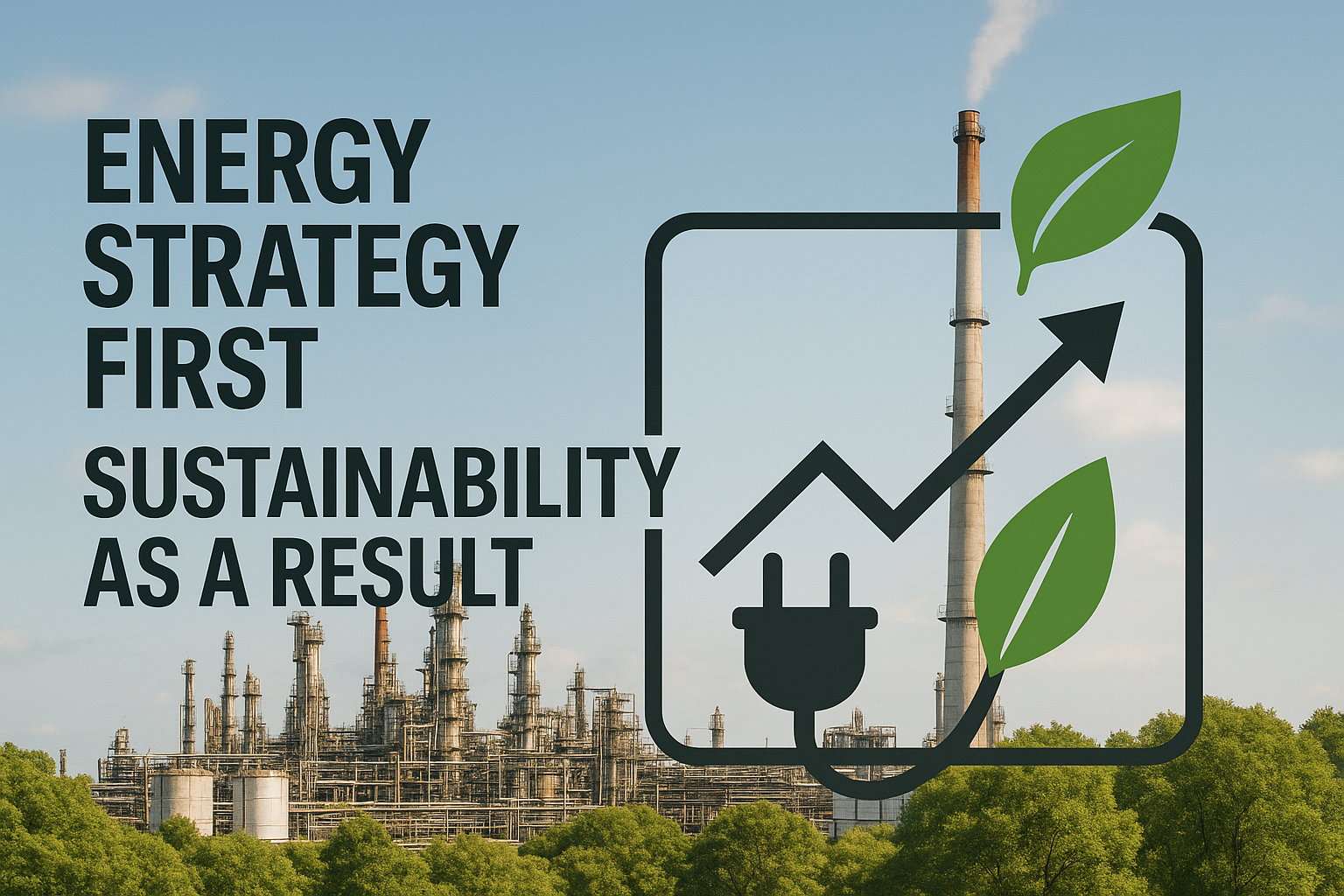If you oversee cement production, energy invoices likely dwarf every other line item. IEA data shows energy accounts for 30-40% of total production expenses, while The Cement Institute puts maintenance at another 15-25% of operating spend. Those two categories alone can decide whether a campaign finishes in the black. They also carry the heaviest environmental burden, because every unproductive kilowatt drives fuel costs and CO₂ alike.
Yet despite decades of incremental tweaks, global cement-sector energy efficiency has improved only 18% since 1990. That gap between today’s performance and what’s possible creates an obvious opportunity, and rising carbon prices add urgency. The seven proven, data-backed tactics that follow can be applied immediately to shrink costs without risking clinker quality. Advanced controls, smarter maintenance, and targeted retrofits turn raw plant data into lasting savings.
1. Improve Kiln and Preheater Efficiency
Kilns and their cyclone preheaters consume 70-80% of a cement plant’s energy budget, making even small efficiency improvements highly valuable. Recent thermal demand averages near 3.6 GJ per tonne of clinker—every reduction below that benchmark translates directly to fuel cost savings.
Preheater upgrades deliver the fastest path to efficiency gains. Moving from a five-stage to a seven-stage design dramatically reduces exhaust-gas temperature and cuts coal consumption significantly. Modern seven-stage systems push outlet temperatures well below traditional designs while reducing fuel requirements per tonne of clinker.
Pairing an upgraded preheater tower with precalciner technology amplifies these benefits. Precalciners burn more than half of the fuel outside the rotary shell, creating a system that runs hotter where needed and cooler at the stack. Modern precalciner kilns regularly achieve thermal consumption around 3,300 MJ per tonne, an industry benchmark that delivers substantial reductions in both operating costs and emissions.
Beyond hardware upgrades, operational optimization creates additional value. Tightening combustion control, balancing air-to-fuel ratios, and deploying AI techniques to detect performance drift before operators notice it can extract maximum efficiency from existing equipment.
2. Lower the Clinker Factor
Clinker is the high-temperature, limestone-based intermediate that gives cement its binding power. The clinker factor, the share of this material in your final blend, directly drives kiln fuel use and the CO₂ released during calcination. Lowering it delivers one of the quickest wins for cutting both costs and emissions. A significant reduction in the clinker-to-cementitious ratio is an important target for the cement industry’s decarbonization strategy, and planned reductions of this magnitude are projected for the coming decades.
Maintaining product quality means matching SCM chemistry to performance targets, adjusting admixture dosage, and tightening blend control. Real constraints remain: high-grade SCM supply, regional standards, and customer acceptance. When you balance those factors effectively, every percentage point of clinker you replace translates into lower fuel bills and a leaner carbon footprint.
3. Optimize Grinding Processes
Building on thermal efficiency gains, grinding alone drains up to 70% of your plant’s electrical load, so every kilowatt you save here flows straight to the bottom line. Traditional ball mills consume roughly 33–40 kWh per ton of cement, but newer technologies slash that dramatically.
Vertical roller mills trim consumption to 20–23 kWh—about 30% less than ball mills. High-pressure grinding rolls push even further, dipping to around 11 kWh and cutting consumption by nearly half. Hybrid HPGR–ball-mill circuits split the difference at roughly 28 kWh.
If a full technology switch isn’t feasible, retrofitting a hydraulic roller press ahead of an existing mill delivers compelling returns. One ball-mill upgrade cut electricity use by 25% while boosting throughput.
Complement mechanical changes with high-efficiency separators that curb recirculation and prevent over-grinding. Power demand increases significantly with Blaine fineness, though the exact rate depends on mill type and operating conditions rather than a fixed percentage ratio. The cheapest efficiency gains often start with proper maintenance—keep liners, media, and lubrication in top shape before chasing bigger investments.
4. Reduce Electrical Energy Consumption
Beyond grinding optimization, your biggest electrical loads come from the plant’s network of high-capacity fans, clinker coolers, and material conveyors. These motors often run at full speed even when the process doesn’t need it, so the quickest win is to add variable frequency drives. Field data compiled by the European cement sector shows that VFD-equipped fans regularly use less power than fixed-speed units, delivering a payback measured in months rather than years. Pair those drives with IE3 or IE4 motors and automated idle-stop logic, and you cut parasitic losses further while extending motor life.
Waste heat recovery systems provide another lever. By converting high-temperature exhaust into electricity, you offset grid purchases and lower peak demand. In many cases the recovered power covers the entire auxiliary load of the raw-mill circuit. Plants that combine these measures with site-wide energy-management software routinely operate below 90 kWh per tonne of cement, versus the global average of roughly 100 kWh/t. Digitized dashboards surface abnormal consumption patterns, letting you tune airflow, material flow, and cooling rates before extra kilowatt-hours disappear into the stack.
5. Streamline Maintenance to Minimize Downtime
With electrical systems optimized, smart maintenance practices become crucial for sustaining efficiency gains. Maintenance represents a major cost burden, consuming 15–25% of operational expenses. Every unscheduled breakdown multiplies energy waste and creates costly production delays that ripple through delivery commitments.
Reactive repairs wait for equipment failure, while calendar-based schedules replace parts too early. Predictive maintenance takes a smarter approach, cutting maintenance spending by preventing unexpected breakdowns and boosting productivity through data-driven scheduling.
This approach uses vibration, temperature, and pressure sensors connected to monitoring systems that apply machine-learning algorithms to detect problems before they escalate. Continuous condition monitoring delivers real-time equipment health insights that replace guesswork with precision.
Start with critical single-point failures like the kiln drive, tertiary-air fan, and ball-mill gearbox. These components can cripple entire production lines when they fail. As monitoring systems learn normal operating patterns, they suggest optimal service windows that align with planned shutdowns, eliminating costly emergency repairs.
The outcome is more consistent throughput, extended asset life, and maintenance budgets based on actual equipment condition rather than arbitrary schedules.
6. Recover and Reuse Waste Heat
While predictive maintenance ensures reliable operations, waste heat recovery transforms unavoidable thermal losses into productive energy. When you watch hot gases stream out of the preheater stack or feel the heated air leaving the clinker cooler, you’re seeing money drift away. These two points account for the bulk of untapped thermal energy in most plants, yet both can be harvested with a tailored waste heat recovery (WHR) system.
Installing a WHR unit converts that surplus heat into 25–35 kWh of electricity per tonne of clinker. That’s enough to shave 5–8% off total CO₂ emissions and cut purchased power costs. Most plants pair a steam Rankine cycle with high-moisture gas streams, while drier, lower-pressure exhausts are increasingly considered for Organic Rankine Cycle systems that avoid water treatment complications, though steam cycles remain the dominant technology overall. Either route turns unavoidable process heat into a revenue-saving generator running alongside production.
Before you commit, map out capital needs, footprint, and maintenance access. Older lines may require duct rerouting or structural reinforcements. Modern heat exchangers minimize gas-side fouling and keep pressure drops low, ensuring stable kiln draft and reliable turbine output.
Plants that addressed these constraints early, particularly in Europe’s energy-constrained markets, now treat waste heat as a core utility. This approach cushions them from volatile electricity prices while moving closer to decarbonization targets.
7. Leverage Process Data for Real-Time Optimization
Your plant’s control system already samples thousands of tags every minute, from kiln inlet oxygen to mill motor amperage, yet most of that data sits unused. When you feed it into modern AI techniques, the numbers turn into real-time action that trims energy, stabilizes quality, and frees operators from constant manual tuning.
Closed-loop AI control monitors subtle kiln drift, adjusts fuel and airflow before free lime shoots up, and nudges separators to prevent over-grinding that wastes electricity. Early adopters report keeping specific heat below 3.3 GJ per tonne of clinker and cutting grinding power by nearly a third, performance that aligns with the best-practice benchmarks recorded by energy efficiency experts.
Because these models learn from existing historian archives, you rarely need new hardware; the biggest investment is connecting data pipelines and trusting the algorithms. Integrated dashboards expose correlations you might miss, say, while built-in recommendations help newer operators match veteran intuition. By layering data-driven optimization on top of kiln, grinding, and maintenance improvements, you unlock extra savings without a single retrofit.
Next Steps Toward Data-Driven Cost Reduction
When you improve kilns, lower the clinker factor, optimize grinding and electricity, streamline maintenance, harvest waste heat, and act on live data, you tackle the sources behind most of your energy and upkeep costs. Fuel costs can be a significant portion of production expenses—particularly in energy-intensive industries—so even small gains can have a substantial impact.
To lock in savings, start by benchmarking against best-practice metrics to understand where you stand today. From there, prioritize high-ROI opportunities that deliver the biggest impact for your specific operation. Begin with low capital investment quick wins that build momentum and demonstrate value to stakeholders. As you see results, invest in a robust data infrastructure that enables more sophisticated optimization approaches. Finally, partner with specialists who can help you scale these improvements across your entire operation.
Imubit’s Closed Loop AI Optimization solution keeps that cycle learning in real-time, so you capture savings every hour instead of every shutdown. Schedule your no-cost AIO consultation to lock in plant savings.




